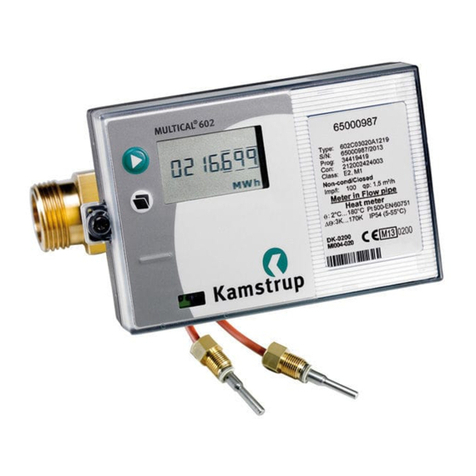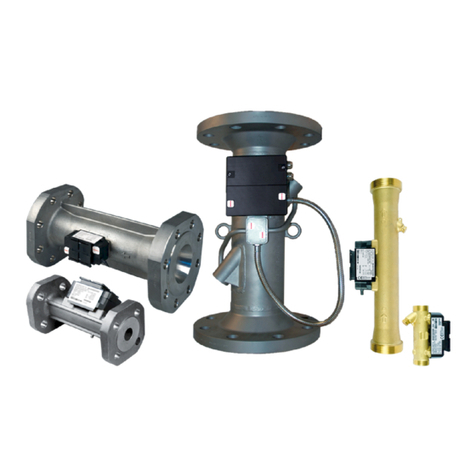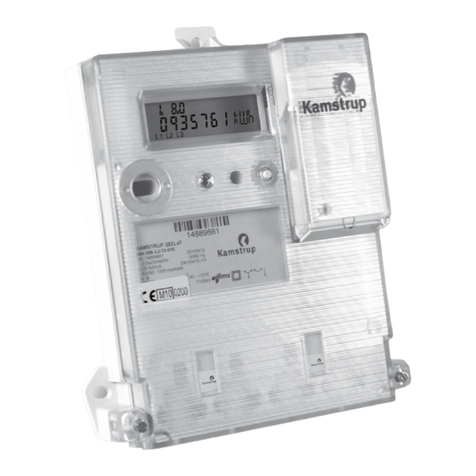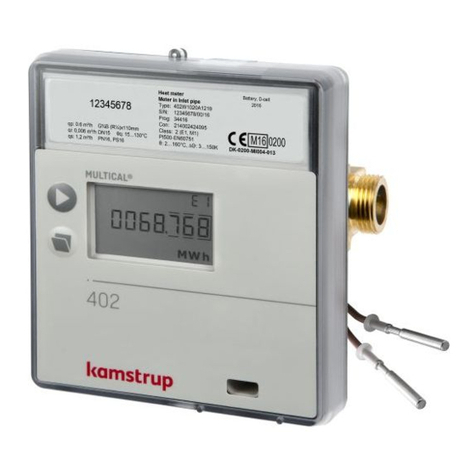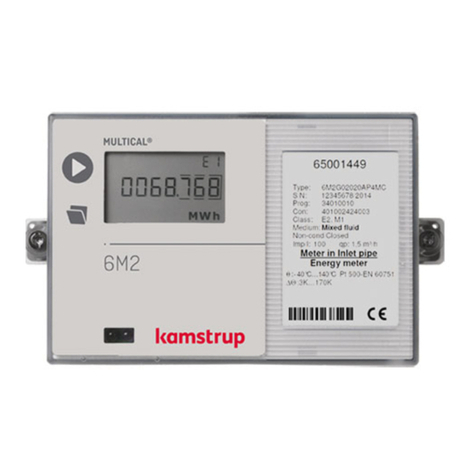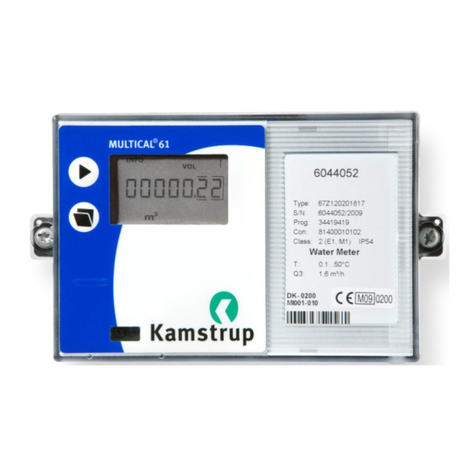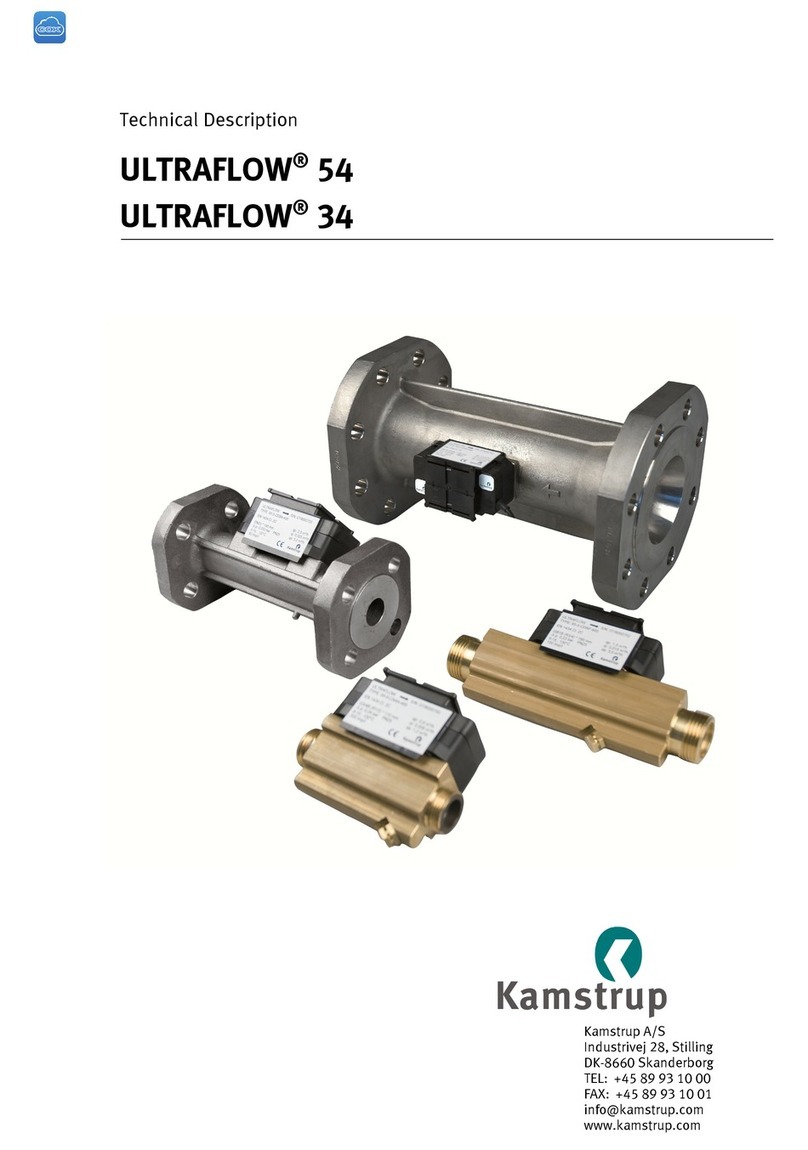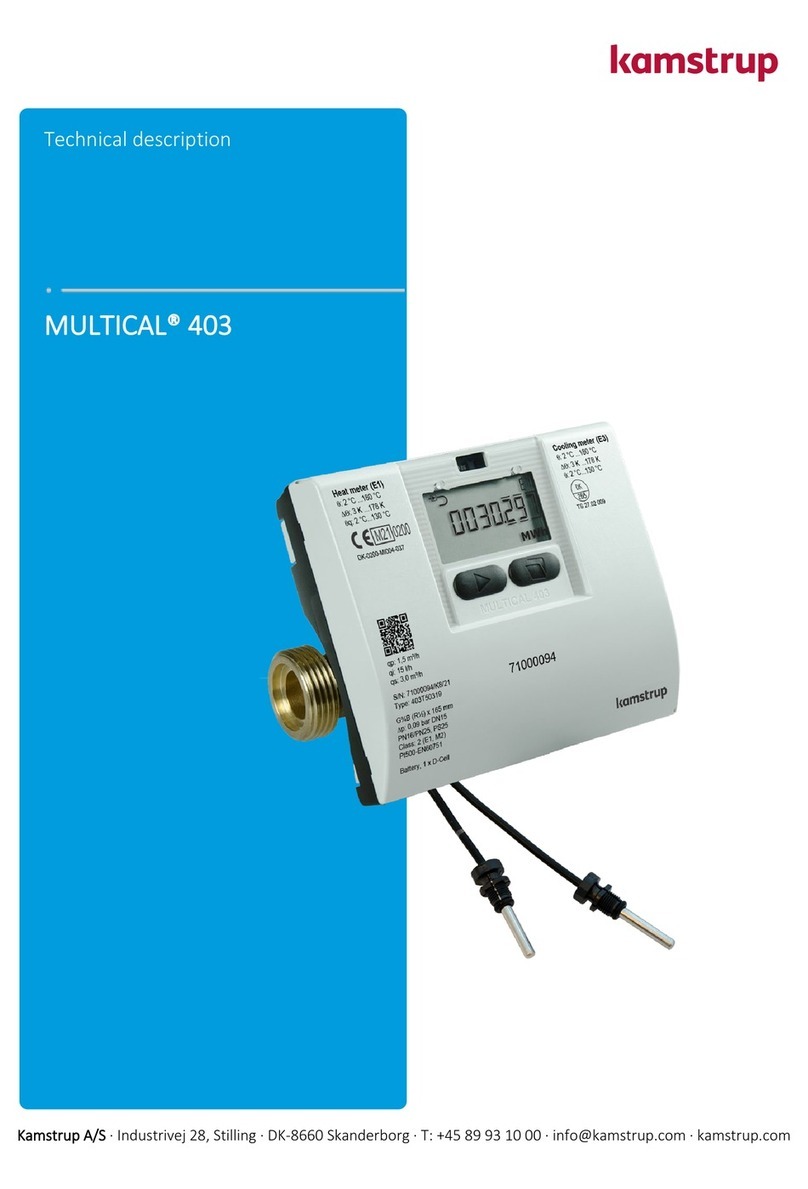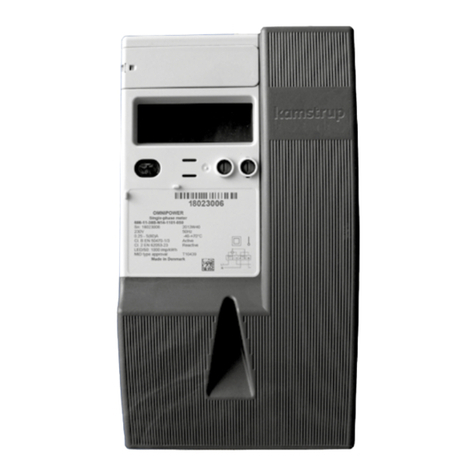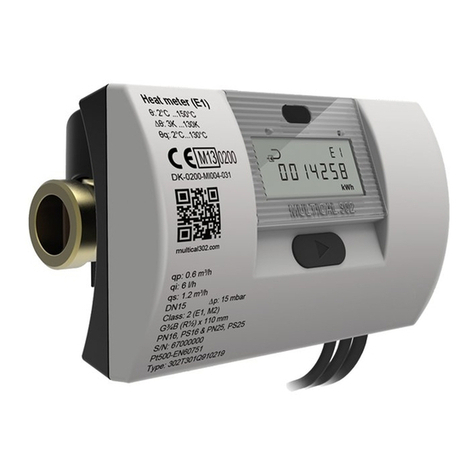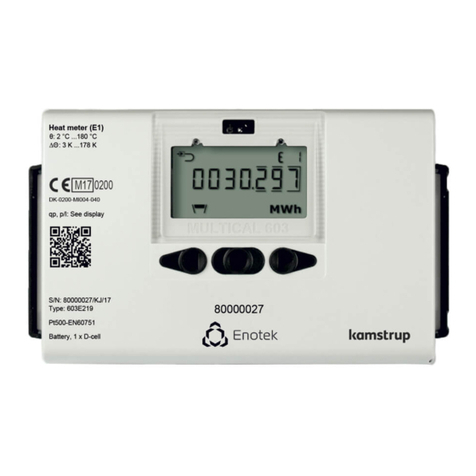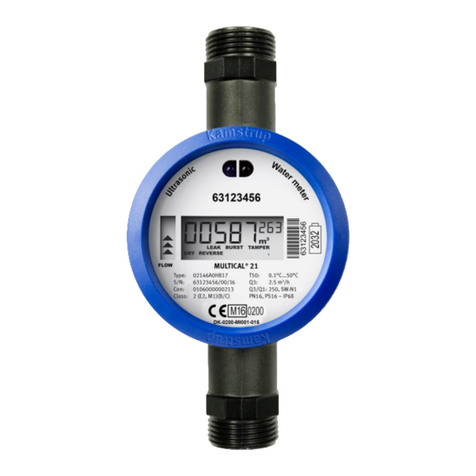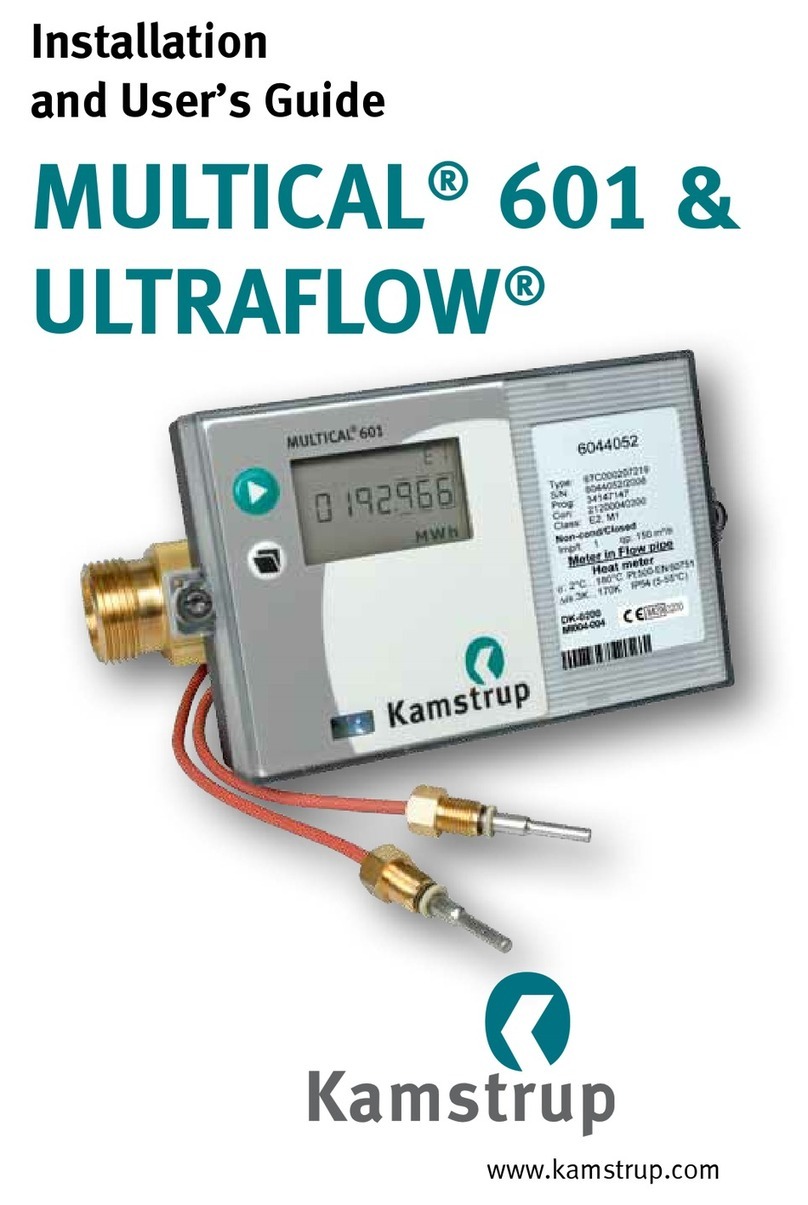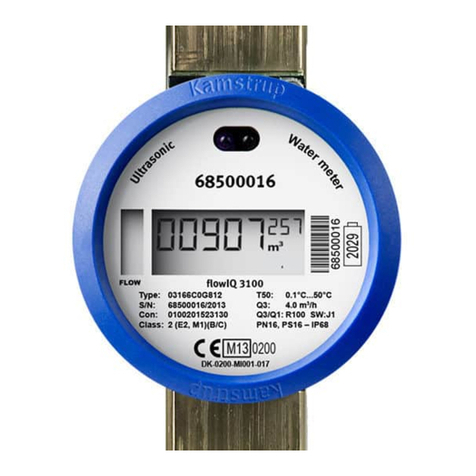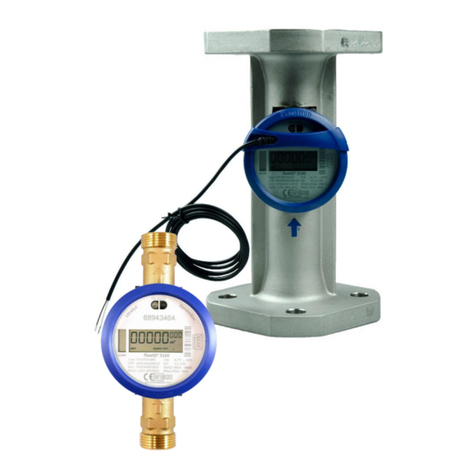
7
5511-710 GB/06.2002/Rev. B1
2. M-Bus System
M-Bus system components
The M-Bus system consists of the following ele-
ments:
nM-Bus Slave
nM-Bus Master
nM-Bus Cascade module
nM-Bus Modem
nCommunication software PcM-Bus
nCommunication software PcModem
nCommunication software PcLink
nIR head for reading
nCabel for reading
The M-Bus Master is built-up as a repeater, which
converts signals from e.g. RS232 to M-Bus format
(18-30 V/0-20 mA). The M-Bus Master has been
constructed to function together with Kamstrup’s
M-Bus Slaves and Kamstrup’s reading software.
The M-Bus Master can supply up to 40 M-Bus
Slaves at the power consumption of 1.5 mA
(1 Unit Load) per M-Bus Slave.
One or more M-Bus Cascade modules can be in-
stalled, and can comprise up to 250 M-Bus Slaves.
Communication
The communication on the M-Bus consists of volt-
age modulation from M-Bus Master to M-Bus Slave
(30 - 18 V) as well as current modulation from
M-Bus Slave to M-Bus Master (0 - 20 mA) through
an ordinary two-wire cable.
The M-Bus system has been constructed to ob-
serve the regulations of the EN 1434-3.
The communication on the M-Bus system is asyn-
chronous serial bit transmission (EN 60870-5-1) in
half duplex mode, i.e. the communication consists
of 1 start bit, 8 data bits, 1 parity bit (even), 1 stop
bit.
The transmission speeds are 300 baud or 2400
baud.
Addresses of M-Bus Slave units
If the M-Bus system is to function with a number of
connected M-Bus Slaves, each M-Bus Slave must
be given an identification number (address). This
is done via MULTICAL®, which contains a unique
customer number to the M-Bus Slave. The unique
address of the M-Bus Slave is equal to the last 3
digits of the customer number. The address can be
re-programmed either by means of the hand-held
terminal, MULTITERM, or the verification program
of METERTOOL.
The M-Bus Slave automatically reads MULTICAL®’s
number in connection with start or initialisation.
The address must lie between 1 and 250.
If the last three digits of the customer number ex-
ceed 250 (e.g. 345) the first digit will be ignored
and the ID number of the M-Bus Slave will only be
determined by the two last digits (e.g. 45).
Each M-Bus Slave must have its own address.
The M-Bus Master always sends a message on the
bus to a given address, which is encoded in the
message (the format). Only the M-Bus Slave in
question will reply.
If several M-Bus Slaves have the same address a
collision will arise, when the M-Bus Slaves reply to
the M-Bus Master.
However, there are two special addresses, which
function as follows:
Address 254:
All M-Bus Slaves will answer to this address. The
address must solely be used in systems with only
one M-Bus Slave connected, e.g. for test.
Address 255:
No M-Bus Slave will answer to this address, but all
M-Bus Slaves will receive the message. This mes-
sage makes it possible e.g. to change the baud
rate of a whole system at a time, only by sending a
format from the M-Bus Master.
If 3 systems are available each with 250 M-Bus
Slave modules, the number system is build up as
follows:
1st. system:
The energy meters are programmed with customer
numbers from 1001 to 1250.
2nd. system:
The energy meters are programmed with customer
numbers from 2001 to 2250.
3rd. system:
The energy meters are programmed with customer
numbers from 3001 to 3250.
Operation
It is optional whether the M-Bus Master is to be
permanently switched on, or the bus system is to
be switched off when not in operation (reading).
The M-Bus system cannot supply the MULTICAL®
integrating units. Only the M-Bus Slaves are supp-
lied from the M-Bus Master.
In connection with start-up the M-Bus Master will
have an initialization time of approx. 5 sec., and
the overload diode will light. After the 5 sec., the
diode will switch off and the M-Bus Master is
ready. In addition, the initialization time of M-Bus
Slaves is approx. 9 sec., before data can be ac-
quired, and if mounted in MULTICAL®III. However,
if the M-Bus Slaves are installed in MULTICAL®the
initialization time is approx. 12 sec.
The initiation time for Kamstrup 182/382/351 is
typically 7 seconds.
Rarely, a longer initiation time might be necessary -
see Appendix.
In case the bus system is turned on constantly,
these initialization times will only appear in con-
nection with installation.
